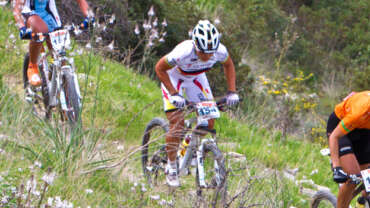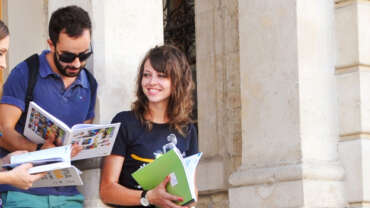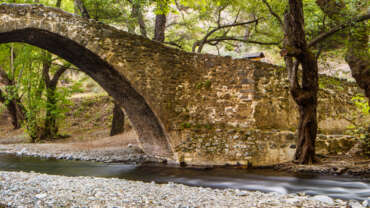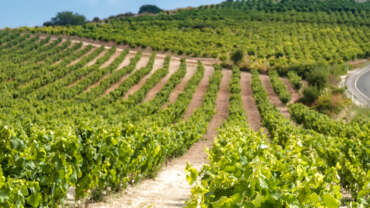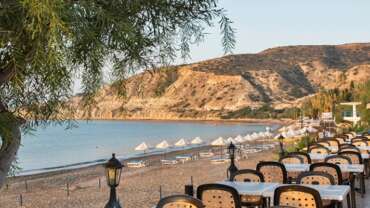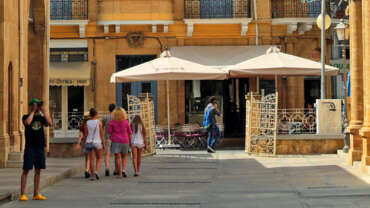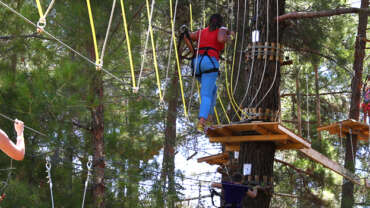Rural Tourism Cyprus
Krasochoria of Lemesos (Limassol) Wine Route – Rural
The Lemesos (Limassol) winemaking villages are renowned for their deep-rooted history of viticulture, as well as their excellent local wines and the stunning scenery of the area that produces them.
Located on the southern slopes of the Troodos mountain range, nowhere else in Cyprus can such a great presence of wineries be found! Collectively, the villages are known as ‘Krasochoria’, which is comprised of the two Greek words for ‘wine’ and ‘villages’ – a name that tells the story of its rich winemaking history in itself.
The route is outstanding; a dry climate combined with a unique geology results in first-rate wines, made mostly from the local grape varieties Xynisteri (white) and Mavro (red), as well as some imported varieties, including Cabernet Sauvignon, Mataro, Grenache and Syrah among a total of 23 different varieties.
A total of 20 charming, unspoilt villages comprise this route with 16 wineries between them. The villages are well worth visiting, not only for their wineries, but also their traditional architecture, cobblestoned narrow passages and delightful surroundings. They are also home to some of the best-known tavernas on the island.
This scenic route passes through: Lemesos, Kolossi, Erimi (Cyprus Wine Museum), Kantou, Souni-Zanakia, Pano Kivides, Agios Amvrosios, Lofou, Vouni, Koilani, Pera Pedi, Mandria, Kato Platres, Omodos, Vasa, Mallia, Arsos, Pachna, Anogyra and Avdimou.
Trooditissa – Foini (Linear) – Lemesos (Limassol) District, Troodos Forest Nature Trail
Points of interest: The route follows a forest road that connects Trooditissa Monastery with the beautiful village of Foini, with exceptional views towards the village along the way. The trail crosses the Trooditissa River and leads you to the route’s main attraction, the Chantara waterfall (eight metres high), then passes by vertical cliffs before the journey ends on the Foini – Agios Dimitrios road, right outside Foini. The entire trail is located within Troodos National Forest Park, which is a Natura 2000 area.
Flora: While hiking you can study (amongst other plants) the indigenous plants: Calabrian pine (Pinus brutia), strawberry tree (Arbutus adrachnae), and the endemic golden oak (Quercus alnifolia).
Local Archaeological Kourion Museum, Episkopi
Kourion Archaeological Museum is housed in a traditional building that was once the private residence of the late George McFadden, Assistant Director of the University of Pennsylvania, who led extensive archaeological research at the ancient city of Kourion and its environs from 1934 -1953.
The museum opened in 1969 and consists of two exhibition halls that showcase finds from the nearby archaeological sites, including red polished ware of the Early Bronze age, pottery and golden jewellery of the Mycenaean era, and a large number of offerings from the nearby Sanctuary of Apollon Hylates.
The skeletal remains of inhabitants of the city who lost their lives in the 4th century earthquakes constitute one of the most impressive exhibits of the museum, and were found in situ in a Roman house.
Machairas Monastery
Located on the slopes of Kionia, in the valley of Machairas mountains, Machairas Monastery is one of the three Royal and Stavropegic of the island and houses the miraculous icon of Panagia (the Virgin Mary) of Machairas, which is attributed to Agios Loukas (Apostle Luke) the Evangelist.
According to tradition, an unknown hermit sneaked the icon into Cyprus during the iconoclasm years (between the 8th and 9th century AD) and kept it in his cave until his death. Blessed with the divine grace, the hermits Ignatios and Neophytos around 1145, discovered the cave – which was obscured by bushes – and were able to reach it by cutting down the undergrowth with a knife given to them by divine hand. As a result, the revealed icon was given the name ‘Machairiotissa’ from the Greek word for ‘knife’ – ‘machairi’. The monastery was built on the same spot, also taking the name.
Today, the renovated vestry basement houses a collection of old books and manuscripts, icons and other religious artefacts.
The brotherhood at the monastery is extremely devout, keeping vows as strict as those of Mount Athos in Greece.
Kourion Archaeological Site
The archaeological remains of Kourion – which was one of the island’s most important city-kingdoms in antiquity – are of the most impressive on the island, and excavations have unearthed many significant finds, which can be viewed at the site.
The city-kingdom was built on the hills of the area, and overlooked and controlled the fertile valley of the river Kouris. According to archaeological finds, evidence suggests that Kourion was associated with the Greek legend of Argos of Peloponnese, and that its inhabitants believed they were descendents of Argean immigrants. The once-flourishing kingdom was eventually destroyed in a severe earthquake in 365 AD.
The magnificent Greco-Roman theatre – the site’s centrepiece – was built in the 2nd century BC and extended in the 2nd century AD. The theatre has been restored, and is now used for open-air musical and theatrical performances – mainly during the summer months – making it one of the most popular settings for high-calibre cultural events.
East of the theatre are the remains of a prominent building, the ‘House of Eustolios’, which was originally a private villa that was turned into a public recreation centre during the Early Christian period.
Whilst the villa was modest in size, it was well equipped and richly adorned. Its remains consist of four panels of beautiful, 5th century mosaic floors in the central room, and a bathing complex that is located on a higher level, accessed by steps, north of the building. A roof structure allows visitors to enjoy the site all year round, and explore its remnants.
The baths themselves originally opened off the central room to the north and east, where there were cold baths (frigidarium). Before each is a shallow foot-bath; while on the west, the remains of the hypocausts – which heated the medium room (tepidarium), and the hot room (caldarium) – can be seen. In the latter, the built-in basins for hot baths have survived, as have the firing chambers, where hot air was carried through the hypocausts, travelling up through specially-cut flues, through the walls, and beneath the terracotta tiles of the floor.
Along with the House of Eustolios, there are further impressive mosaic floors in the ‘House of Achilles’ and the ‘House of the Gladiators’, with the villas named after the scenes depicted on the mosaics.
The remains of the Roman Agora are also visible at the site. The structure dates back to the early 3rd century, with additions made later on, during the Early Christian period. The Roman Agora is built on the remains of an earlier public building, which was in use from the end of the 4th century to the end of Hellenistic period.
The Agora of the city is surrounded by porticos with marble columns on both sides, whilst on its northwest side, is an impressive public bath and a small temple, the Nymphaeum, dedicated to the water nymphs.
An early Christian basilica at the site dates back to the 5th century, with separate baptistery on the external northern side.
The Stadium of Kourion lies 1km to the west, on the right side of the road towards Pafos.
Birthplace of Aphrodite – Petra tou Romiou
Aphrodite’s mythical birthplace ‘Petra tou Romiou’ is an interesting geological formation of huge rocks along one of the most beautiful coastlines on the island, located on the southwest coast of the Pafos (Paphos) district.
According to the legend, the Ancient Greek Goddess of Love and Beauty – Aphrodite – was born of the sea foam here. Legend tells that she rose from the waves and was escorted on a shell to this particular beach.
The giant rock formations, which are seen at the same location are linked with another – more recent – legend which tells that the Byzantine hero Digenis Akritas heaved them there to keep the Saracens Arabs (7th-10th centuries) at bay. The name of Petra tou Romiou (‘rock of the Greek’ in Greek) comes from the hero.
It is said that in certain weather conditions, the waves rise, break and form a column of water that dissolves into a pillar of foam. With imagination, this momentarily looks like an ephemeral, evanescent human shape. Other popular myths tell that swimming around the rock three times will bring various blessings, including eternal youth and beauty, good luck, fertility and true love.
The site is linked to the Aphrodite Cultural Route.
Agia Paraskevi Byzantine Church – Geroskipou village
Located in the village of Geroskipou, this interesting 9th century Byzantine church is a five-domed, three-aisled, barrel-vaulted basilica, making it one of only two such churches on the whole island, and a significant example of Byzantine architecture.
The beautiful interior wall paintings date to various periods, from the 8th-15th centuries. A monochrome reddish cross, painted directly on the stone, is of an earlier type and was revealed during restoration works. This type of cross is usually dated to the Early Christian period, up until the 8th-9th century.
Apart from its frescoes, the church also contains a rather significant portable, double-sided icon, dating to the 15th century. The Virgin Mary is depicted on one side, and the scene of the Crucifixion on the other.
According to tradition, the name Geroskipou (‘sacred garden’ in Greek) derives from the sacred gardens of the Goddess Aphrodite, which were located to the south of the village towards the sea, at the point where the ancient pilgrims began their journey to the sanctuary of Palaipafos (old Pafos). As such, the church may stand on the ruins of an ancient temple dedicated to Aphrodite, although it could also originally have been dedicated to Timios Stavros (the Holy Cross). Today, it is dedicated to the Christian martyr Agia Paraskevi.
3rd Local Route of Pafos (Paphos) – Religious Route
Like in the case of the other routes of Pafos (Paphos), this route also starts from the Palaiochristian Basilica of Chrysopolitissa in Kato Pafos, the church that is connected to Apostolos Pavlos, since in its yard lies the column on which he was tied and whipped.
The Church of Agia Kyriaki, also in Kato Pafos, dates back to the 15th century. Τhe Βyzantine Museum of the Holy Bishopric of Pafos is considered to be one of the richest museums in terms of significant exhibits, and its collection can easily be compared to that of the Museum of the Archbishop Makarios III Foundation in Lefkosia.
The next stop is at the Bishopric and at the Church of Agios Ilarionas, with only the south aisle of the original building salvaged today. The Church of Panagia tis Eleousas in Nata village is a church of large dimensions, which has been under reconstruction in the past years.
The Μonastery of Panagia tou Sinti, in Pentalia is assumed to have been built in 1542. While originally it was autonomous, it later became, under Turkish rule, a glebe of Kykkos Monastery.
The last church of this route is the Church of Agios Nikolaos in Galataria with beautiful frescoes of the first half of the 16th century.




